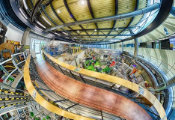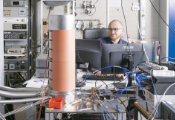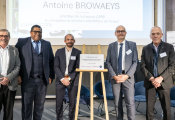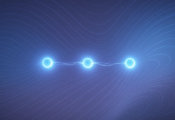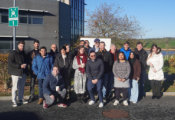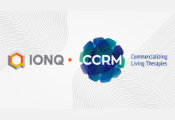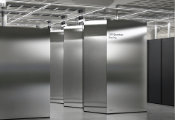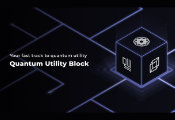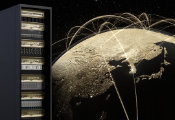Major Development Successes in Diamond Spin Photon Quantum Computers
October 25, 2024 -- Lower cooling requirements, longer operating times, lower error rates: Quantum computers based on spin photons and diamond promise significant advantages over competing quantum computing technologies. The consortium of the BMBF project SPINNING coordinated by Fraunhofer IAF has succeeded in decisively advancing the development of spin-photon-based quantum computers. On October 22 and 23, 2024, the partners presented the interim project results at the mid-term meeting of the BMBF funding measure Quantum Computer Demonstration Setups in Berlin.
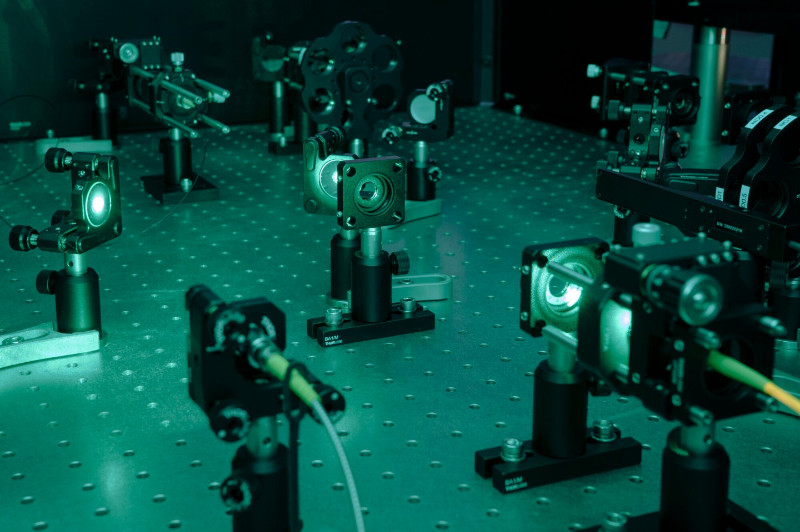
Solving complex problems in seconds that would take decades even for modern supercomputers — that is the promise of quantum computers. However, as clear as the goal is, the path to it is still unclear. This is because there are still several competing approaches to realizing quantum computers. And each has specific advantages and disadvantages in terms of hardware and software, ranging from reliability and energy consumption to compatibility with conventional systems.
Under the coordination of the Fraunhofer Institute for Applied Solid State Physics IAF, a consortium of 28 partners is working on the project “SPINNING — Diamond spin-photon-based quantum computer” to develop a quantum computer based on spin photons and diamond. This should be characterized by lower cooling requirements, longer operating times and lower error rates than other quantum computing approaches. The hybrid concept of the spin-photon-based quantum computer also provides for greater scalability and connectivity, which enables flexible connection with conventional computers.
Qubits through color centers in diamond
“In the SPINNING project, we want to make an important contribution to the German quantum technology ecosystem. To this end, we are using the material properties of diamond to develop a quantum computing technology that can be just as powerful as the other technologies but has none of their specific weaknesses. We create qubits using color centers in the diamond lattice by trapping an electron in one of four artificially created lattice defects (vacancy centers) doped with nitrogen (NV), silicon and nitrogen (SiNV), germanium (GeV) or tin (SnV). The electron spin couples through magnetic interaction with five nuclear spins of neighboring 13C carbon isotopes. The central electron spin can then be used as an addressable qubit,” explains Prof. Dr. Rüdiger Quay, coordinator of the SPINNING network and institute director at Fraunhofer IAF.
“The individual qubits form a matrix structure, the qubit register. The SPINNING quantum computer will consist of at least two and later up to four of these registers, which in turn will be optically coupled over long distances of 20 m, for example, so that a comprehensive exchange of information can take place,” Quay continues. The optical coupling between the central electron spins and registers is realized by an optical router in combination with a light source and a detector for readout. The individual states of the nuclear spins are controlled by high-frequency pulses.
Project results: Demonstration of entangled qubit registers at high fidelity
On the occasion of the mid-term meeting of the funding measure Quantum Computer Demonstration Setups of the Federal Ministry of Education and Research (BMBF), under which SPINNING is funded, the consortium presented the interim project results on October 22 and 23, 2024, in Berlin. They are characterized by remarkable successes. For the first time, the project team successfully demonstrated the entanglement of two registers of six qubits each over a distance of 20 m and achieved a high mean fidelity (in the sense of the similarity of the entangled states).
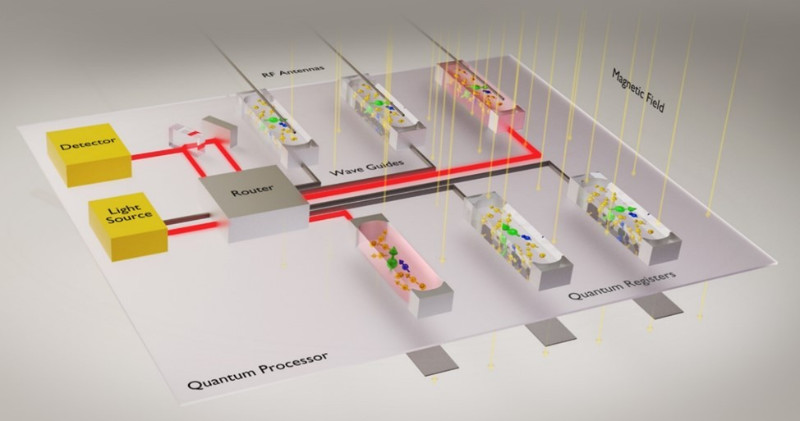
Further project successes include significant improvements in the central hardware and software as well as the peripherals for the spin-photon-based quantum computer: The basic material and its processing, the realization of color centers in diamond for the generation of qubits, could be improved as well as the technology of the photonic resonators. The basis for this was a better understanding of the four types of defects in the diamond lattice and the error mitigation of diamond-based qubits. The consortium also succeeded in developing the electronics required to operate the quantum computer and demonstrating the first applications of the quantum computer for artificial intelligence.
Advantages in comparison with SSJ quantum computers
The exemplary comparison of the interim results of SPINNING with the key indicators of quantum computers based on superconducting Josephson junctions (SJJs) underlines the value of the work done in the project as, to date, many times more resources have been invested worldwide into the latter’s development. With an error rate of < 0.5%, the spin-photon-based quantum computer comprising twelve qubits to date achieves the same result in the one-qubit gate as the prominent SJJ models Eagle (127 qubits) and Heron (154 qubits).
In terms of coherence time, the spin-photon-based quantum computer with a length of over 10 ms clearly outperforms the SSJ models (> 50 µs), although the distance for entanglement is many times greater at 20 m compared to a few millimeters.
Outlook: Challenges in resonator design and software development
The remaining technical challenges until the end of the project include the further development of the resonator design towards improved reproducibility and more precise alignment. On the other hand, the researchers are working on further improving the software for automatic control of the spin-photon-based quantum computer’s routing.

